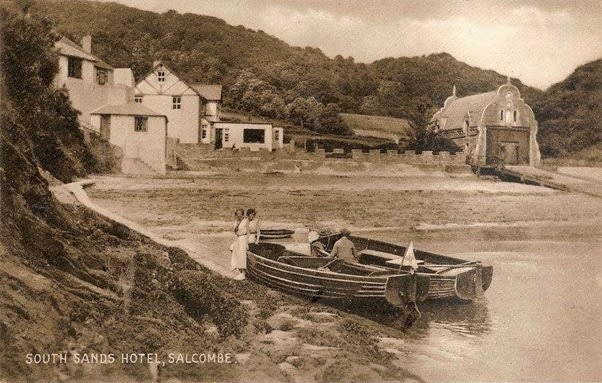A Brief Look into Salcombe's History
Salcombe is a popular seaside town in the South Hams area of Devon. This lies within South Devon's Area of Outstanding Natural Beauty. With its hidden coves and golden sandy beaches, it sure is a destination to be familiar with.
Always loved Salcombe? With it's renowned blue seas and sunny sky's, here's a little look into Salcombe's history and what put Salcombe on the map.
People believe that Salcombe was first mentioned in 1244, but Archeologists discovered Stone Age sites on both sides of the estuary's mouth, which date back as far as 3000 years old.
The oldest settlement was built inland because of the danger that came from the sea; slavery, pirates and invaders.
In 1570, the local census recorded that 56 people lived in Salcombe and 12 in Portlemouth which is the other side of the estuary. Half of the names in this local census will still be around today showing that the families settled here for centuries.
Fort Charles
If you look out into Salcombe’s estuary from South Sands you will see the decrepit remains of a castle.
First named The Bulwark, Originally built by Lord Viscount Courtenay as a gun battery in AD 1544, it was used as protection for Salcombe following a french invasion scare. It also became a blockhouse during the civil war for Salcombe harbour with its new name, Fort Charles. It was the last royalist stronghold to survive in the country.
It was a four story building with gun ports near the top so the harbour could be protected in the event of an attack.
In 1545 it was raided twice by Parliament ships, on an ebb tide (the change from high tide to low tide). When commanded by a local royalist, Sir Edmund Fortescue in AD 1644 the fort was surrendered to parliamentary forces and was partly demolished. Fort Charles to this day is known for its long and valiant history in defending the mouth of the estuary.
The Moult
Change was finally being seen in the second half of the 18th century with Salcombe's first holiday home.
In 1764 by John Hawkins, The Moult was built, which is situated between North Sands and South Sands. Being designed as a place to unwind in, this famous pink house offers a lot to visitors wanting to holiday in style, still to this day.
Fruit Trade
In the early 1800s Salcombe became more than a quaint little fishing village with an unhealthy reputation for smuggling.
In 1835, the town had become famous for its beautiful sailing ships (Schooners) which were known as ‘The Salcombe Fruiters’. These small, fine lined vessels raced home with boat loads of easily spoiled fruit from places like the Azores and the Mediterranean.
The fruit was then taken to fruit markets in London, Liverpool, Bristol and Hull. St.Michaels oranges were particularly profitable which came from the Azores. Pineapples were also a part of the trade from the Bahamas to the London markets. For nearly forty years, Salcombe's locals played a major part in the fruit trade. The Salcombe Schooners were the most acclaimed. Unfortunately in 1870 due to an outbreak of orange and pineapple disease the fruit trade of Salcombe declined.
Between the two world wars, Salcombe gradually developed into a modest and tranquil holiday resort for people who shared a love for the beautiful scenery, sailing and fishing. There were no attempts to add the attractions to Salcombe that you might see at other popular holiday centres, this kept Salcombe a quaint little town.
The stunning coastal walks, the Mediterranean-like seas win plenty of holidaymakers over each year. As a picturesque destination Salcombe has become increasingly popular since 1244 when it was first mentioned.
Finally, If you’d like to know the history of the beautiful seaside hotel you're staying in, please head over to the ‘About us’ section on our website.

